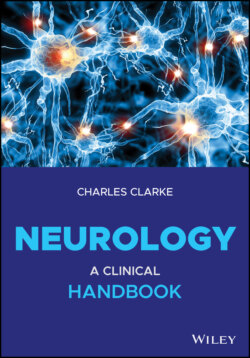Читать книгу Neurology - Charles H. Clarke - Страница 51
Thalamus
ОглавлениеThe paired conjoined halves of each thalamus are large nuclear masses. Divisions and connections are shown in Figure 2.13.
Figure 2.13 Thalamus (from above): (a) nuclei (b) connections of relay nuclei.
Source: Fitzgerald (2010).
Note the large ‘Y’ of thalamic white matter – the internal medullary lamina – that divides the nuclei into three cell groups:
Anterior (within the ‘Y’)
Medial dorsal
Lateral nuclei.
Lateral nuclei are divided into ventral and dorsal tiers. The medial and lateral geniculate bodies lie posteriorly. The reticular nucleus surrounds each thalamus laterally, separated by an external medullary lamina traversed by thalamo‐cortical fibres. The three groups of thalamic nuclei, somewhat uninformatively named are:
Relay (specific) nuclei
Association nuclei
Non‐specific nuclei.
Thalamic nuclei connect to most areas of the cortex, cerebellum and cord. The neurology of thalamic damage is confined largely to central post‐stroke pain, a.k.a. thalamic pain, and sensory loss (Chapters 6 and 23).
